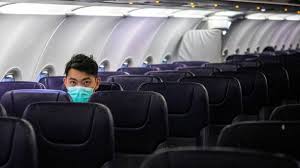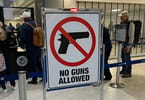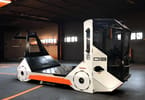Currently, there is only one American air carrier that gets it at least halfway, and it seems to be American Airlines, according to Safertourism.com
The threat of Coronavirus on airplanes is real, and if airlines want to stay in business they better do what it takes to be pro-active.
American said it was providing hand sanitizer for flight attendants, and sanitizing wipes for customers on trans-Pacific flights who want to wipe down surfaces themselves.
Providing sanitizing wipes for passengers and hand sanitizers throughout the aircraft and in toilets should be standard for any airline operator.
Can it be the cost? It costs pennies, but every penny counts when airlines about to hit the worst ever in recent history.
Alternatively, passengers should be encouraged upon check-in and throughout airports to buy hand sanitizers and it should be readily available at every store at any airport.
Every aircraft should be disinfected at every airport. It may take another 10 minutes to do so and schedules may have to be slightly adjusted, but this is way better than having an aircraft parked for months because no one is flying.
Cushions and blankets should be safely disinfected. The virus stays for 6 days and just a regular wash and fold won’t do it.
Airline crews are trained to:
- Report travelers with
- fever (person feels warm to the touch, gives a history of feeling feverish, or has an actual measured temperature of 100.4°F [38° C] or higher) that has persisted for more than 48 hours OR
- fever AND one of the following:
- persistent cough
- difficulty breathing
- appears obviously unwell
- Report, as soon as possible before arrival, by one of the methods described in the Guidance for Air Travel Industry Reporting of Onboard Death or Illnesses to CDC.
Review CDC’s Infection Control Guidelines for Cabin Crew
- CDC recommends that companies review and update, as needed, their personal protection policies and communicate and train employees on how to manage sick travelers.
CDC recommends the following measures for cabin crew to protect themselves, manage a sick traveler, clean contaminated areas, and take actions after a flight.
- Practice routine handwashing.
- Wash hands often with soap and water for at least 20 seconds after assisting sick travelers or touching potentially contaminated body fluids or surfaces.
- Use alcohol-based hand sanitizer (containing at least 60% alcohol) if soap and water are not available.
- Identify sick travelers who meet the above description.
- Minimize contact between passengers and cabin crew and the sick person. If possible, separate the sick person from others (2 meters or 6 feet is ideal) and designate one crew member to serve the sick person.
- Offer a facemask, if available and if the sick person can tolerate it. If a facemask is not available or cannot be tolerated, ask the sick person to cover their mouth and nose with tissues when coughing or sneezing.
- Treat all body fluids (such as respiratory secretions, diarrhea, vomit, or blood) as if they are infectious.
- Wear disposable gloves when tending to a sick traveler or touching body fluids or potentially contaminated surfaces. Remove gloves carefully pdf icon[PDF – 1 page] to avoid contaminating yourself, then wash hands.
- When tending to a sick traveler from China who has fever, persistent cough, or difficulty breathing, use additional protective equipment in the Universal Precaution Kit pdf icon[PDF – 1 page]external icon
- face mask, eye protection, and a gown to cover clothing.
- Properly dispose of gloves and other disposable items that came in contact with the sick person or body fluids in biohazard bag or a secured plastic bag labeled as “biohazard.”
After arrival, CDC Quarantine Station staff will conduct a health assessment of the sick traveler’s symptoms and possible exposures. If necessary, CDC staff will coordinate transport to a health care facility for medical evaluation and testing. CDC will update the airline about the results of the testing and any need for follow-up of exposed crew members or passengers.
WHAT TO TAKE AWAY FROM THIS ARTICLE:
- If a facemask is not available or cannot be tolerated, ask the sick person to cover their mouth and nose with tissues when coughing or sneezing.
- The threat of Coronavirus on airplanes is real, and if airlines want to stay in business they better do what it takes to be pro-active.
- Properly dispose of gloves and other disposable items that came in contact with the sick person or body fluids in biohazard bag or a secured plastic bag labeled as “biohazard.























